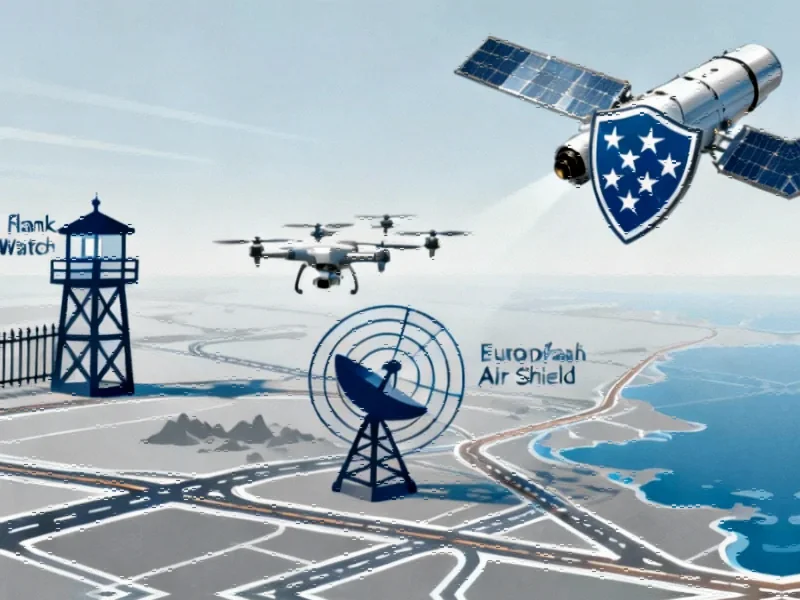Europe’s Defense Transformation Takes Shape
The European Commission has unveiled an ambitious defense roadmap that establishes concrete milestones for achieving military sovereignty by 2030. The Preserving Peace – Defence Readiness Roadmap 2030, presented to EU member states on October 16, translates earlier strategic documents into actionable programs with specific timelines and funding mechanisms. This comprehensive plan represents Europe’s most significant defense coordination effort in decades, responding to growing geopolitical tensions and security challenges.
European Defense Commissioner Andrius Kubilius emphasized the transformative nature of this initiative during the official presentation, stating that “this plan is how we are going to mobilize ourselves, member states, and EU institutions to deliver.” The roadmap operates within the broader ReArm Europe/Readiness 2030 package, which aims to mobilize up to €800 billion through innovative financing approaches including fiscal flexibility, EU-backed loans, and joint procurement tools.
Four Pillars of European Defense
The roadmap establishes four flagship programs that will form the cornerstone of Europe’s enhanced defense capabilities. Each program addresses specific security gaps while ensuring interoperability with NATO systems and standards.
European Drone Defense Initiative emerges as an immediate priority, triggered by recent drone incursions across multiple member states. The program will coordinate interoperable counter-drone detection, tracking, and neutralization capabilities, with initial operational capability expected by late 2026 and full functionality projected for 2027. This initiative reflects the growing importance of addressing asymmetric threats in contemporary conflict scenarios.
Eastern Flank Watch establishes a comprehensive layered defense system along the EU’s eastern borders, integrating air defense, counter-drone capabilities, ground systems, and maritime security in the Baltic and Black Seas. The program also enhances situational awareness for internal security and border management, with initial capacity planned for 2026 and full operational capability by 2028. This multi-domain approach represents a significant advancement in border security technology and coordination.
Integrated Defense Systems and Space Security
European Air Shield will create an integrated, multi-layer air and missile defense system designed to be fully interoperable with NATO infrastructure. The deployment timeline calls for initial launch by the second quarter of 2026, representing one of the most ambitious continental air defense projects since the Cold War era.
European Space Shield marks Europe’s decisive entry into the space security domain, with launch scheduled for Q2 2026. The program will focus on protecting space assets and services through integration with Galileo, IRIS², and other dual-use systems. Key capabilities will include space domain awareness, anti-jamming and anti-spoofing technologies, and advanced in-space operations such as refueling services. While specific budget allocations and industrial partners remain undisclosed, the program signals Europe’s commitment to securing its orbital infrastructure amid growing strategic competition in the space domain.
Funding Innovation and Implementation Challenges
The financing framework for these ambitious programs combines national defense spending with innovative EU instruments. The proposed SAFE (Security Action for Europe) loan mechanism aims to scale up defense investments through common procurement, while simultaneously mobilizing private capital via the European Investment Bank and accelerated implementation of the Savings and Investment Union.
Commissioner Kubilius acknowledged the significant implementation challenges ahead, noting that “the implementation of the roadmap is giving a very heavy task and mandate to the Commission, to the EU institutions, and to Member States. This will demand huge efforts on our side to deliver.” The success of these programs will depend on unprecedented coordination between national governments, EU institutions, and private sector partners across multiple technological domains.
Broader Industrial and Strategic Implications
The defense roadmap extends beyond immediate security concerns to address Europe’s strategic industrial position. By establishing clear capability requirements and timelines, the plan provides much-needed predictability for defense manufacturers and technology providers. This coordinated approach could significantly enhance Europe’s defense industrial base while creating opportunities for cross-sector innovation and technology transfer.
The simultaneous push for a military mobility area by 2027 underscores the comprehensive nature of Europe’s defense transformation. By harmonizing rules and developing shared transportation corridors, the EU aims to dramatically improve its ability to rapidly deploy forces across member states—a capability gap highlighted by recent security challenges.
As Europe moves forward with these ambitious programs, the defense landscape continues to evolve rapidly. Recent technology sector developments and ongoing industrial innovations will likely influence the implementation of these flagship programs, creating both opportunities and challenges for European defense planners in the coming years.
This article aggregates information from publicly available sources. All trademarks and copyrights belong to their respective owners.
Note: Featured image is for illustrative purposes only and does not represent any specific product, service, or entity mentioned in this article.

